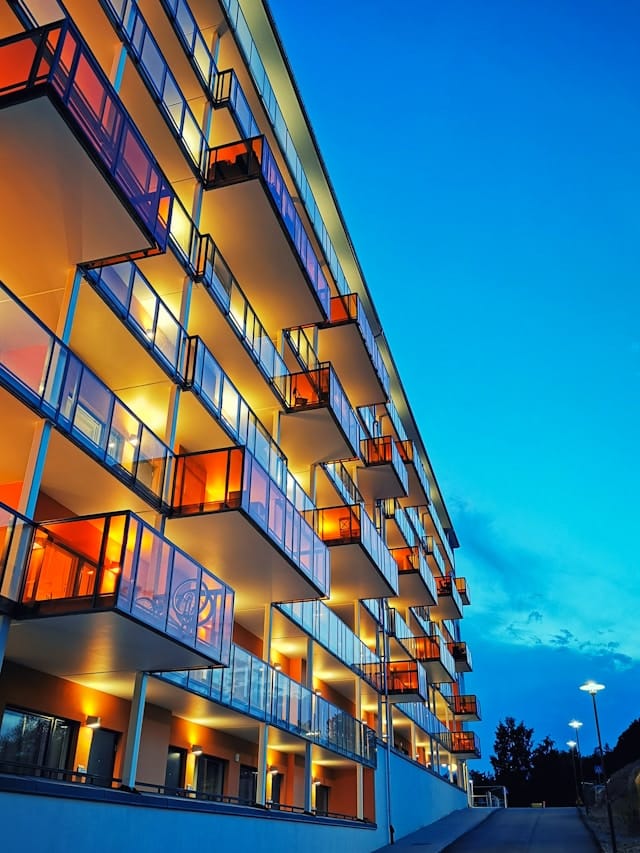Urban living, especially for families, is increasingly being redefined, as humans navigate the intricate dance of modernity, convenience, and community-building. City life is all about maximizing the use of space, particularly when it comes to housing. As a result, the design of urban apartments is shifting towards a more family-friendly approach. This evolution in urban housing encompasses numerous factors, including interior design, furniture, building architecture, and even city planning. However, one common thread ties all these aspects together – the desire to create a comfortable, functional, and appealing living space for families in cities.
Crafting a Functional Apartment Layout
When designing an urban apartment for a family, the first thing to consider is the layout. It has to be both practical and appealing to cater to the needs of every family member. The layout should strike a balance between shared and private spaces. Shared spaces like the living room should be large enough to accommodate all family members comfortably. Private spaces like bedrooms, on the other hand, should afford each occupant a sense of independence and privacy. Another crucial aspect of layout design is ensuring that you have ample storage space. With children in the picture, the need for storage becomes even more critical.
In the same genre : How to Develop a Risk Management Framework for International Real Estate Investment?
Next, think about the flow from one room to another. A well-thought-out flow will avoid unnecessary congestion, particularly in peak hours, such as mornings when everyone is getting ready for the day.
Prioritizing Child-Friendly Design Elements
One of the biggest challenges you will face when designing family-friendly urban apartments is accommodating the needs of children. Unlike adults, children require a lot of space for play and exploration. Therefore, designing child-friendly spaces within the constraints of an urban apartment can be quite a task.
Also read : How to Assess the Feasibility of Solar Farm Developments on Unused Land?
Firstly, consider the safety of the children. For instance, sharp corners on furniture should be avoided and windows should be secured. In terms of décor, think about using washable paint and stain-resistant fabrics, considering that children can be a little messy.
Incorporating engaging elements in the design, such as wall murals or interactive furniture, can make the space more appealing to children. Be sure to create a dedicated space for their play and study areas.
The Power of Flexible Furniture in Urban Design
In the confines of an urban apartment, furniture needs to be more than just aesthetically pleasing. It has to be functional, flexible, and space-saving. This is where versatile furniture comes into play. Items such as foldable dining tables, wall-mounted desks, and sofa beds can dramatically save space, while also offering the flexibility needed in a family setting.
Another aspect to consider is storage. Opt for furniture pieces that double up as storage units. For instance, beds with built-in storage or ottomans that can hold toys or books. Remember, every piece of furniture in an urban apartment needs to earn its keep.
Creating a Sense of Community within Buildings
Family-friendly urban living goes beyond the confines of the individual apartment. It extends to the building and the wider community. Therefore, it’s crucial to incorporate community-building features within the apartment building design.
Consider common areas where families can interact and socialize. These could be in the form of a shared garden, a play area for children, or a communal lounge. Such spaces not only foster a sense of community but also provide additional space where children can play and adults can relax or interact.
Embracing the Monochromatic Aesthetics
When it comes to the color scheme, white and other neutral shades are the go-to colors for most urban apartments. Not only do they make a room look more spacious and brighter, but they also provide a canvas for personal expression. A predominantly white apartment gives residents the freedom to add their touch of color and personality through décor pieces, furniture, and artwork.
For a family-friendly setting, consider adding a pop of color to keep the space vibrant and engaging. This might be through a statement wall, colorful cushions, or a brightly colored rug. However, remember to strike a balance and not overwhelm the space with too many colors.
Designing urban apartments with a family-friendly approach is more than just an architectural task. It’s a delicate balancing act between maximizing space, ensuring comfort, fostering community, and, most importantly, creating a home that every family member will love. As urban living continues to evolve, one thing remains certain – the need to create spaces that cater to the dynamic needs of modern families living in cities.
Integrated Play and Study Areas for Children
Ensuring that a child’s needs are met in a family-oriented urban apartment is of utmost importance. The design needs to provide space for play and study, promoting a balance between rest and activity. The challenge lies in creating these spaces without eating up too much of the limited urban living space.
To tackle this, designers can make use of multi-functional furniture. For instance, a coffee table that opens up into a miniature play area, or a wall unit that can be transformed into a study desk. This allows for the creation of play and study areas that can be tucked away when not in use – a perfect solution for limited space situations.
Another creative idea could be to integrate play areas into the living room design. This can be achieved by dedicating a corner of the living room for play, complete with storage for toys and books. To make the area truly enticing for children, designers could consider incorporating imaginative elements, such as wall murals or a small indoor tent or fort.
When it comes to study areas, a quiet and well-lit corner of the room could serve as a dedicated space for homework and reading. Installing shelves above the study table can provide additional storage for books and school supplies.
Outdoor Communal Spaces: A Key to Vibrant Urban Living
The design of the apartment building itself plays a significant role in creating a family-friendly urban living environment. Outdoor communal spaces are a valuable asset in fostering a sense of community, promoting interactions among residents, and offering additional play areas for children.
In urban planning, the inclusion of shared outdoor spaces such as gardens, playgrounds, or rooftops can greatly enrich the quality of urban living. These spaces can serve as venues for community gatherings, a place for children to interact and play, or simply a serene spot for adults to relax and unwind.
For instance, rooftop gardens in New York City or shared courtyards in San Francisco have become popular features in modern urban housing. They not only offer a much-needed breath of fresh air but also create a sense of community among residents.
While creating these communal spaces, it’s important to take into consideration the safety and accessibility for all ages. Design elements such as secure fencing, well-lit pathways, and child-friendly play equipment can make these spaces more welcoming and safe for families.
Conclusion: Embracing a New Age of Family-Friendly Urban Living
As the nature of urban living evolves, the importance of designing family-friendly urban apartments cannot be overstated. Successful designs will strike a balance between practicality and aesthetics, create a harmonious flow between rooms, and incorporate child-friendly design elements.
But beyond the individual apartment, the larger building and its communal spaces also play a crucial role in shaping the urban living experience. By incorporating shared outdoor spaces and promoting community interactions, designers can contribute to a vibrant and engaging urban community.
Indeed, the approach to urban design is changing. The focus is shifting from individual housing units to a more holistic approach that considers the building and community as a whole. As we move forward, this trend is likely to continue, paving the way for a new age of family-friendly urban living.






